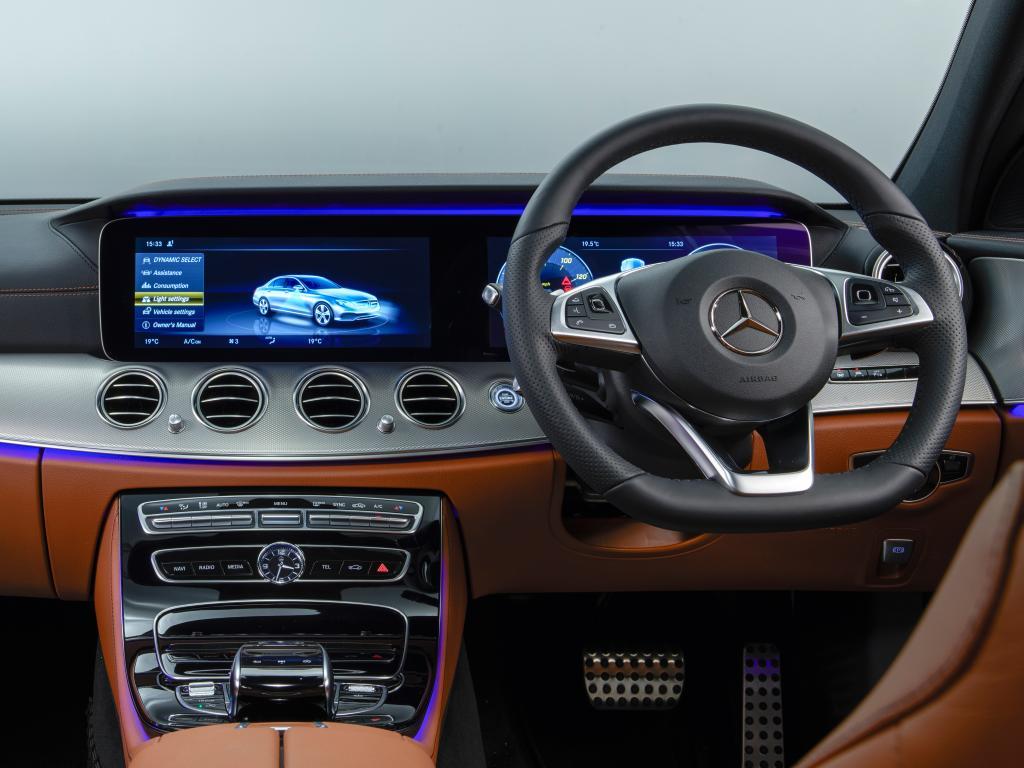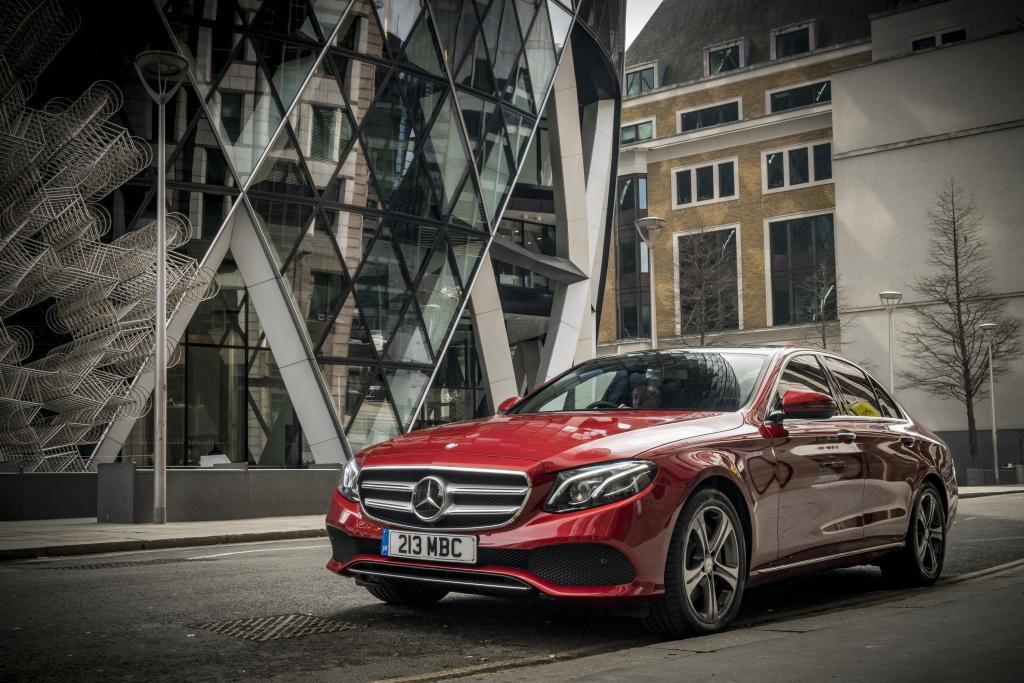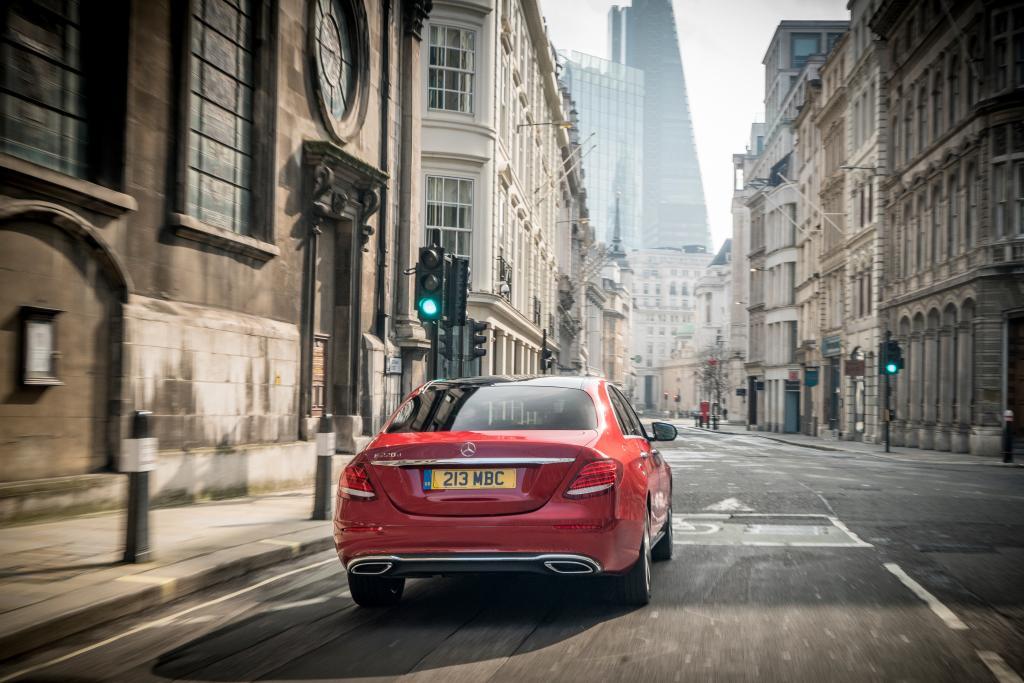Car Review: Mercedes-Benz E 350 e
Clever dinosaur

Your support helps us to tell the story
From reproductive rights to climate change to Big Tech, The Independent is on the ground when the story is developing. Whether it's investigating the financials of Elon Musk's pro-Trump PAC or producing our latest documentary, 'The A Word', which shines a light on the American women fighting for reproductive rights, we know how important it is to parse out the facts from the messaging.
At such a critical moment in US history, we need reporters on the ground. Your donation allows us to keep sending journalists to speak to both sides of the story.
The Independent is trusted by Americans across the entire political spectrum. And unlike many other quality news outlets, we choose not to lock Americans out of our reporting and analysis with paywalls. We believe quality journalism should be available to everyone, paid for by those who can afford it.
Your support makes all the difference.The remarkable thing about the Mercedes-Benz plug-in hybrid is that it is no longer regarded as remarkable. Not so long ago the notion of a big Merc saloon gliding silently – literally silently – along the road on electric power only was the stuff of science fiction. OK, on the boring end of the stuff of science fiction, a bit less enthralling than three-legged Martian fighting machines or time travel or talking apes, but pretty futuristic even so. Yet now, 20 years on since the first mainstream petrol/electric hybrid, the Toyota Prius, swept stealthily into the market such technology is thoroughly mainstream, and companies such as Volvo are talking about no new models without some electrical propulsion (though minimal sometimes) and the Government has given 2040 as the doomsday for the internal combustion engine. I admit that plugging a car into the mains as you would a kettle does still give me some schoolboyish amusement, though.
Yet it may not be much longer before this plug-in hybrid technology will itself be old hat. Such is the pace of progress in the world of the pure electric car that the internal combustion engine, even with additional hybrid electric technology added on, may be technologically obsolescent. Batteries are becoming more powerful and, more to the point, cheaper, driven by the surge in their usage in China, where everything is mass-market and thus vast economies of scale can be harvested. Lightweight materials, as pioneered by BMW in their all-electric i3 and i8 cars, will also help electric cars boost their real-world ranges to hundreds of miles. Fast charging of an electric vehicle may never be as snappy as filling up a tank of fuel, but there again the differential is getting smaller as fast charging points multiply. One day we may even be able to find a way to liberate people in flats and terraced houses to charge their cars at home without tethering cables all over the place – the biggest obstacle to wider electric adoption in the medium term. Tesla, meantime, has shown how an electric car can represent a prestige as well as a green or economy choice. In other words we have come a long way since the original G-Wiz, a funny little machine that, nonetheless, did its bit to germinate the electric vehicle revolution, albeit still in its infancy. (The Reva G-Wiz is no longer on sale by the way, and its more modern successor, the Mahindra e50, has also been withdrawn from the UK market – a shame.)
For now, though, Mercedes offer us the E-Class E 350 e. This model has a conventional four cylinder petrol engine, in fact identical to the one in the E200 base model. Added to that is a now conventional hybrid system of an electric motor plus a stack of lithium ion batteries (similar to the ones in laptops) that live in the boot (so that space for luggage is a little less and there’s a narrow ledge within the boot). These batteries store the power generated, for example during braking, that would otherwise go to waste. Plus it has a “plug-in facility”, a socket in the rear bumper that will let you plug it into the mains via a normal three-pin socket (slow and not really recommended) or via a proper dedicated faster charging point, either around your home/garage or in a car park or on-road space. Added to all of that is some “intelligent” (that word crops up a lot in the marketing material, by the way) software that will help judge the road ahead and make that storage/use of the battery power just that bit more efficient, for example by “seeing” a hill coming up ahead (the sat nav helps with this).
The spec
Mercedes-Benz E 350 e AMG-line
Price: £48,065
Engine capacity: 2-litre petrol 4-cyl, 9-sp manual
Power output (HP@rpm): 211 (petrol) + 82 (electric)
Top speed (mph): 155
0-60mph (seconds): 6.2
Fuel economy (mpg): 134 equivalent
CO2 emissions (g/km): 57
Pure Electric range (km): 30+
BIK tax rate %: 13
The great benefit of this technology, which is indeed impressive, is that the car moves from different types of prolusion in the most efficient and the greenest way, leaving the carbon dioxide emissions count at 49g per kilometre travelled; the all-petrol E200 is three times as polluting (though still a decent score for a bigger car). Or, put another way, the E 350 e is about half as polluting as the Suzuki Swift hatch I tried the other week. Company car drivers, as well as planet Earth, get the most from this, as the low emissions figure pushes the tax liability right down. Given the backlash against diesel in particular and the prospect of ever steeper taxes on diesel-powered vehicles, the hybrid has obvious fiscal attractions.
To drive, the E 350 e also boasts outstanding quietness. It was Toyota’s luxury Lexus arm that spotted the potential of hybrid drive as a way of enhancing refinement and performance rather than just economy, and Mercedes-Benz have been catching up, with hybrid options in the S-Class limo and here in the mainstream E-Class, the car the company has traditionally relied on to make its profits. So for anything up to about 18 miles it can travel silently on its electric reserves, and never does the petrol engine (a refined unit in any case, albeit with just the four cylinders) intrude. The nine-speed electric gearbox is less fussy and buzzy than the constant velocity unit you’ll find in a Prius for example, and is all the better of it. Select “Comfort” mode (there are options from Economy to Sport +), and the air suspension and supportive seats will place you in the company of one of the nicest ways for the upper-middle classes to get from A to B. With the AMG styling kit you get some nice chrome highlights too.

Like lots of pricier cars these days the E-Class will almost drive itself for you, thanks to adaptive radar cruise control and an uncanny ability to read lane markings and speed limit signs, aided by a reliable sat nav system. It will sense when you’re meandering into the wrong lane, when you want to steer, when you really should brake (and will intervene accordingly), when you should speed up to keep pace with the vehicle in front, and tell you if you’re speeding or too near to obstacles. It is, in other words, tantalisingly close to the autonomous transport concept that was also once in the realm of science fiction films – notably the hovercar of the year 2073 in the Woody Allen movie Sleeper, maybe in real life one day arriving with the even more useful Orgasmatron).
There’s a an awful lot of gadgetry on board the Mercedes E-Class, especially this hybrid variant, and so much so that Mercedes provide idiot motoring journalists with a glossary to help them understand all the jargon. Here’s a sample that surprised and delighted me, both in fact and in the pretentiousness Mercedes-Benz couldn’t quite resist, and which also, frankly, explain things I’d not noticed and which they can actually put perfectly clearly. Not since I last picked up brewer’s Dictionary of Phrase and Fable or Roger’s Profanisaurus from Viz have I had so much fun with a work of reference. Here are my three favourites:
“Curve Tilting Function Bends are recognised through the stereo camera behind the windscreen which registers the curve in the road surface up to 15 metres ahead. The base points of the steel springs integrated into the ABC suspension struts are raised by plunger cylinders on one side of the vehicle, and lowered on the other depending on the road angle and vehicle speed. As a result the vehicle leans into bends in a similar way to motorcyclists.”
“Energising massage function on the hot-stone principle, combining warmth with a massage, with six available programmes. Air chambers inflate individually in combination with fast-acting seat heating function replicating a hot-stone massage.”
“Thermotronic two zone automatic climate control system which allows the air distribution on both sides of the vehicle to be separately adjusted and also automatically switches over into air recirculation mode if the pollutant levels in the outside air become too high.”

Clever? Yes and no. As I say, the technology deployed here is formidable and, though this is an expensive car, represents value for money, assuming Mercedes has finally sorted out the quality shortcomings that blighted their cars some years go. Yet given that the next journey of the motor car is electric, like it or not, this Mercedes-Benz might be thought of like Chilesaurus diegosuarezi, that missing link dinosaur they’ve recently discovered – important and fascinating, but in the end a mere bridge to the future. In this case a technological bridge between the technologies of the past (fossil fuels and the internal combustion engine) and the future (clean, all-electric propulsion).
Daimler AG, owner of Mercedes-Benz, has spent the last 131 years perfecting the internal combustion engine and bringing the fruits of their endeavours to millions of satisfied customers. It will be a wrench to have to scrap all that expertise and knowledge in the coming decades. I hope they manage to make the change, and I look forward to seeing, therefore, the first all-electric Mercedes-Benz E-Class, where “E” stands for electric. I hope that I, and Woody Allen, live to see it without having to be cryogenically frozen. Otherwise, put me down for one, delivery date September 2073.
Join our commenting forum
Join thought-provoking conversations, follow other Independent readers and see their replies
0Comments